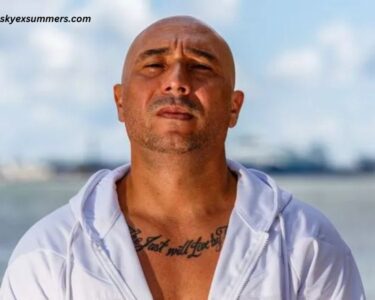The Incident
Steve Irwin, often referred to as the “Crocodile Hunter,” was known for his fearless approach to wildlife, showcasing dangerous animals and advocating for their preservation. On that fateful day, Irwin was filming a documentary titled “Ocean’s Deadliest” at the Great Barrier Reef. While snorkeling, he approached a bull stingray, a species known for its defensive capabilities.
The stingray, feeling threatened, used its barbed tail to defend itself. The barb struck Irwin in the chest, puncturing his heart and causing massive trauma. Irwin’s crew attempted to rescue him, but tragically, he bled to death within minutes. The shocking nature of the incident was amplified by Irwin’s reputation as a champion for wildlife and conservation.
The Biology of Stingrays
Stingrays belong to the family Dasyatidae, which includes over 70 species. They are usually found in shallow coastal waters and are recognized by their flattened bodies and long, slender tails equipped with venomous spines. Contrary to popular belief, stingrays are generally not aggressive and tend to avoid human interaction.
When threatened, stingrays can whip their tails in a defensive manner, delivering a painful sting. The venom can cause significant pain, swelling, and in rare cases, can be fatal if it strikes vital organs or causes severe bleeding.
Stingrays are crucial to marine ecosystems, helping maintain the balance by preying on mollusks and crustaceans. Their role in the food chain and the overall health of marine habitats emphasizes the need for their protection.
The Aftermath of Irwin’s Death
Following the incident, there was an immediate outpouring of grief from fans and colleagues. Irwin’s family, including his wife Terri and children Bindi and Robert, were deeply affected by the loss, but they also chose to honor his legacy. The Steve Irwin Conservation Foundation was established to continue his work in wildlife preservation.
The death of Steve Irwin sparked a renewed discussion about the dangers associated with wildlife interactions. Some argued that Irwin’s daring style may have encouraged others to engage in risky behavior around wild animals, while others emphasized that accidents can happen even with the most experienced individuals.
What Happened to the Stingray?
The stingray involved in Irwin’s death was not captured or killed. In the aftermath of the incident, wildlife experts noted that such encounters are extremely rare and that the stingray was likely acting out of instinct to defend itself. The Australian government and conservation organizations emphasized that the animal should not be blamed for the incident.
In fact, stingrays are generally harmless and are often misunderstood. Many species face threats from habitat loss and fishing practices, and the death of Steve Irwin led to discussions about the need for greater awareness and conservation efforts for these creatures.
Despite initial sensationalism surrounding the incident, the focus eventually shifted back to the importance of respecting wildlife and their habitats. Irwin had always advocated for understanding and protecting animals, and his legacy became a rallying point for many conservation efforts.
The Impact on Conservation
Steve Irwin’s death had profound implications for wildlife conservation, particularly regarding how people engage with animals in the wild. Irwin’s enthusiastic approach encouraged many to develop an interest in wildlife, but it also highlighted the need for responsible behavior when interacting with potentially dangerous species.
Conservation organizations and wildlife educators took this opportunity to promote safer practices around wildlife. Programs aimed at educating the public about respecting animal habitats and behaviors became more prevalent, focusing on coexistence rather than confrontation.
In the years following Irwin’s death, his family continued his mission. Bindi Irwin has become a prominent advocate for wildlife conservation, and the Australia Zoo, which Irwin established, has continued to focus on education and rehabilitation efforts.
The Legacy of Steve Irwin
Steve Irwin’s legacy is not solely defined by his tragic death; rather, it encompasses his dedication to wildlife conservation, education, and advocacy. He popularized the idea that wildlife should be appreciated and respected rather than feared. His energetic and engaging style made learning about wildlife accessible to millions, inspiring future generations to become environmental stewards.
Irwin’s family has kept his memory alive through various initiatives, including television shows, conservation projects, and educational programs. Bindi and Robert have both taken on active roles in the family’s conservation efforts, ensuring that their father’s mission continues.
In recent years, documentaries and programs celebrating Irwin’s life have been produced, bringing attention to the ongoing challenges faced by wildlife and the importance of conservation efforts. His story serves as a poignant reminder of the risks involved in wildlife interactions, as well as the need for compassion and understanding towards all creatures.
Conclusion
The incident involving the stingray that killed Steve Irwin serves as a complex narrative about the intersections of wildlife, conservation, and human interaction. While the stingray acted in self-defense, it became an unwitting focal point in a broader conversation about the balance between humans and nature. Irwin’s tragic death led to increased awareness about wildlife conservation and responsible interaction with animals.
Today, as we reflect on Irwin’s legacy, we are reminded of the importance of education, respect, and advocacy in preserving the natural world. The story of the stingray, much like the story of Steve Irwin himself, emphasizes the need for understanding and coexistence with the diverse and often misunderstood creatures that share our planet. Through continued efforts in wildlife conservation, we can honor Irwin’s memory and work towards a future where humans and wildlife can thrive together.



